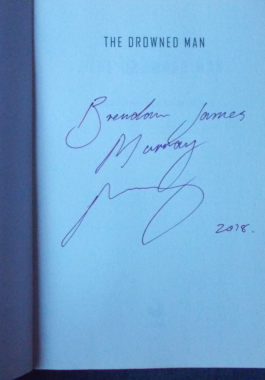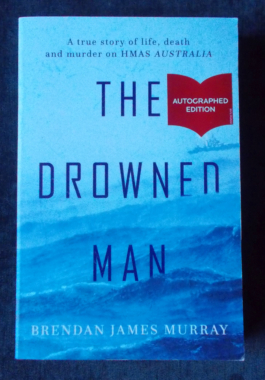- Sorry, this product is unavailable.
-
 On October 9, 1959, Kevin Simmonds and Les Newcombe broke out of Long Bay Gaol. Both incarcerated for strings of minor crimes, their escape set in train the most incredible manhunts in Australian history - a media event which aroused public feeling to fever pitch. The death of a prison warder, the dogged determination of police and the often ingenious desperation of the fugitives focussed public attention on not only the escapees, but also on the prison system from which they had sprung - its brutality and its systematic denial of hope and humanity. This is Les Newcombe's story - a story of life in prison and out of it, as a free man, a prisoner and an escapee. Illustrated with black and white photos.
On October 9, 1959, Kevin Simmonds and Les Newcombe broke out of Long Bay Gaol. Both incarcerated for strings of minor crimes, their escape set in train the most incredible manhunts in Australian history - a media event which aroused public feeling to fever pitch. The death of a prison warder, the dogged determination of police and the often ingenious desperation of the fugitives focussed public attention on not only the escapees, but also on the prison system from which they had sprung - its brutality and its systematic denial of hope and humanity. This is Les Newcombe's story - a story of life in prison and out of it, as a free man, a prisoner and an escapee. Illustrated with black and white photos. -
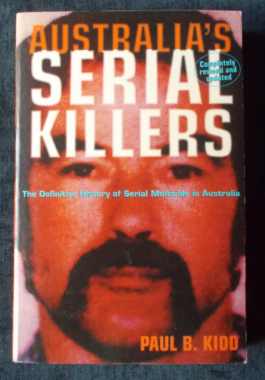
Mass killers, spree killers, repeat offenders - the world now knows them as serial killers. The author covers, in unwavering detail, thirty three true stories of serial killers, dating back to our earliest days: Alexander Pearce, The Cannibal Convict; John Lynch, the Berrima Axe Murderer; Martha Rendell, the Murderous Mistress; Edward Joseph Leonski, the Brownout Strangler; John Wayne Glover, the Granny Killer; The 'Bodies in the Barrels' Snowtown Killings, the Backpacker Murders and many more. Illustrated with black and white photographs.
-

Twisted: John Glatt
$85.00When high school sweethearts Karen and Richard Sharpe married, they shared an interest in medicine, a desire for a family and dreams for the future. For Karen, the dream turned into a nightmare. After years of abuse at the hands of her physician husband, she tried to end their 27-year marriage. Fearing a crushing divorce settlement, Richard ended the marriage first by unloading a .22 rifle into Karen's chest. The murder revealed more than Boston society was ready for: Richard Sharpe's compulsive cross-dressing, with a preference for his own daughter's underwear; his taking of hormones to grow breasts, even stealing his wife's birth control pills to help the process. But there was more - much more...Illustrated with black and white photographs.
-

When Stefanie Rabinowitz was found dead of an apparent drowning in her bathtub at home, it was at first believed to be 'one of those things that just happen'. Because she was only 29, an autopsy was ordered which revealed that Stefanie was in fact strangled before being dumped in the tub to stage a fake drowning. There was no evidence of a break-in, no history of marital trouble - and suspicion fell on her husband Craig: devoted family man, loyal husband and 'everybody's best friend'. As the investigation proceeded, the bizarre double life of Craig Rabinowitz unravelled... With exclusive interviews and black and white photographs.
-
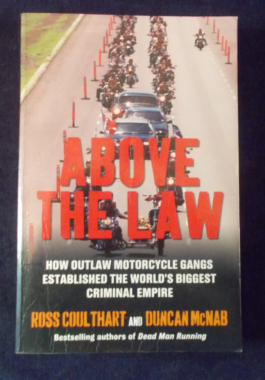 A forensic examination of the global future of organised crime - now being operated on a massive scale by outlaw motorcycle gang - and the difficulties faced by the Australian police in tackling the burgeoning crime empire that outlaw motorcycle gangs are developing in Australia and wherever else biker gangs flourish. It's a hard and chilling look at the global future of organised crime and reveals that the world's most successful criminal empire is now being operated on a massive scale by outlaw motorcycle gangs - an empire that is growing in power, reach and ruthlessness, far surpassing the threats posed by the Mafia, Russian syndicates, Chinese Triads and Japanese Yakuza. Outlaw motorcycle gangs are now being acknowledged as the greatest current organised crime threat with an international empire that is sophisticated, bloody and brutal. It is also both strategic and opportunistic - where they cannot dominate, they broker alliances. Here is how it all started: the turf wars that were fought, the deals that were done, and how the sea of cash that was earned is now being legitimised. It also reveals how law enforcement at an international level is losing the battle against the gangs. Using exclusive insider sources on four continents, this is the first contemporary account of one of the biggest criminal stories of our time.
A forensic examination of the global future of organised crime - now being operated on a massive scale by outlaw motorcycle gang - and the difficulties faced by the Australian police in tackling the burgeoning crime empire that outlaw motorcycle gangs are developing in Australia and wherever else biker gangs flourish. It's a hard and chilling look at the global future of organised crime and reveals that the world's most successful criminal empire is now being operated on a massive scale by outlaw motorcycle gangs - an empire that is growing in power, reach and ruthlessness, far surpassing the threats posed by the Mafia, Russian syndicates, Chinese Triads and Japanese Yakuza. Outlaw motorcycle gangs are now being acknowledged as the greatest current organised crime threat with an international empire that is sophisticated, bloody and brutal. It is also both strategic and opportunistic - where they cannot dominate, they broker alliances. Here is how it all started: the turf wars that were fought, the deals that were done, and how the sea of cash that was earned is now being legitimised. It also reveals how law enforcement at an international level is losing the battle against the gangs. Using exclusive insider sources on four continents, this is the first contemporary account of one of the biggest criminal stories of our time. -

Fatty: Andy Edmonds
$12.00Many people remember Roscoe Arbuckle as 'the fat comedian who raped that girl'. He was one of the highest paid actors of his day and Hollywood was at his feet. On September 5 1921 he threw a lavish party to celebrate his $3 million Paramount contract. It got wildly out of hand and ended abruptly when a starlet named Virginia Rappé let out a terrifying scream. Rappé died five days later and Arbuckle was charged with first-degree murder . Three trials later, he was finally acquitted - and by then his multi million dollar career was devastated and his life was ruined. Recreating the glittering Hollywood of the 1920s, Edmonds draws on new and hitherto unpublished evidence to determine what really happened on that fateful day. Illustrated with photographs. -
 London, 1910 - the city is rocked by its first encounter with foreign gangsters. In December, a group of Russian anarchists were surprised while burgling a jeweller's shop in Houndsditch. They shot and killed three policemen and wounded two others. Within two weeks, most of the gang had been captured. Then the police were informed that the last two members of the gang were hiding at 100 Sidney Street. The police called in the military, local residents were evacuated and the firefight raged for six hours, culminating in the burning of the house and the discovery of the two agitators' bodies in the ruins. On New Year's Day, Leon Beron, a middle-aged Russian Jew, was found battered to death on Clapham Common. Knife cuts on his cheeks, inflicted after death, formed the shape of a rough 'S' - rumour said it was the revenge murder of an informer, 'S' being the initial letter for 'spy' in both Russian and Polish. Steinie Morrison, who had been seen in his company the night before, was arrested and charged with Beron's murder, and sentenced to hang. This was later commuted to life in prison. Morrison protested the change of sentence and for the next ten years, demanded that the original sentence be carried out, proclaiming his innocence and staging hunger strikes. He never changed his story, not even by the smallest detail, and died ten years later in prison. Was an innocent man convicted? And did the murder of Beron have any connection to the Siege of Sidney Street? With black and white photographs.
London, 1910 - the city is rocked by its first encounter with foreign gangsters. In December, a group of Russian anarchists were surprised while burgling a jeweller's shop in Houndsditch. They shot and killed three policemen and wounded two others. Within two weeks, most of the gang had been captured. Then the police were informed that the last two members of the gang were hiding at 100 Sidney Street. The police called in the military, local residents were evacuated and the firefight raged for six hours, culminating in the burning of the house and the discovery of the two agitators' bodies in the ruins. On New Year's Day, Leon Beron, a middle-aged Russian Jew, was found battered to death on Clapham Common. Knife cuts on his cheeks, inflicted after death, formed the shape of a rough 'S' - rumour said it was the revenge murder of an informer, 'S' being the initial letter for 'spy' in both Russian and Polish. Steinie Morrison, who had been seen in his company the night before, was arrested and charged with Beron's murder, and sentenced to hang. This was later commuted to life in prison. Morrison protested the change of sentence and for the next ten years, demanded that the original sentence be carried out, proclaiming his innocence and staging hunger strikes. He never changed his story, not even by the smallest detail, and died ten years later in prison. Was an innocent man convicted? And did the murder of Beron have any connection to the Siege of Sidney Street? With black and white photographs. -
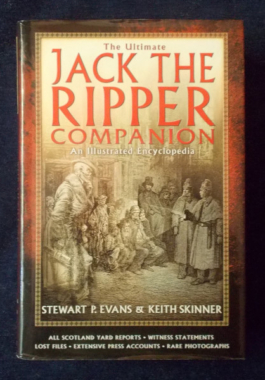 This really is the ultimate for Ripperologists - an encyclopedic work, solidly researched and profusely illustrated, collated from all the known and still-existing official records and supplemented by contemporary press reports. It presents. for the first time in one volume, a prime-source reference book on the eleven shocking prostitute murders that took place in the East End of London between 1888 and 1891. While there is no doubt that the Whitechapel Murders, as they were classified by Scotland Yard, were committed by more than one person, no one knows how many of the killings can be attributed to a single culprit. More than one murderer wore the guise of Jack the Ripper, and the identities of all suspects to this day remain unknown. Divorcing the facts of the Ripper case from the myths that have proliferated in fiction and film, this is a factual, documented narrative of the entire series of crimes, their forensic evidence, the official suspects and possible accomplices, police reports, inquests, newspaper articles of the day and rare photographs.
This really is the ultimate for Ripperologists - an encyclopedic work, solidly researched and profusely illustrated, collated from all the known and still-existing official records and supplemented by contemporary press reports. It presents. for the first time in one volume, a prime-source reference book on the eleven shocking prostitute murders that took place in the East End of London between 1888 and 1891. While there is no doubt that the Whitechapel Murders, as they were classified by Scotland Yard, were committed by more than one person, no one knows how many of the killings can be attributed to a single culprit. More than one murderer wore the guise of Jack the Ripper, and the identities of all suspects to this day remain unknown. Divorcing the facts of the Ripper case from the myths that have proliferated in fiction and film, this is a factual, documented narrative of the entire series of crimes, their forensic evidence, the official suspects and possible accomplices, police reports, inquests, newspaper articles of the day and rare photographs. -

Crime Scene: Esther McKay
$22.00Day after day my life was consumed by killings, distress and gruesome sites, each one adding another piece to an ever-growing mosaic that seemed to be made up of bloodied disposable gloves, plastic bags and human waste... When Esther McKay, an idealistic young constable with the NSW police, entered the tough, male-dominated world of forensic investigation, she was determined to hold her own. She soon found herself at deeply confronting crime scenes, often working alone and without supervision. After years of long, lonely, exhausting days and nights, and following a particularly harrowing high-profile case involving the disappearance of two young boys, Esther had a break-down and was diagnosed with post-traumatic stress disorder. Esther McKay takes us inside the life of a forensic investigator, and reveals as never before the extraordinary demands and dangers of forensic work. -
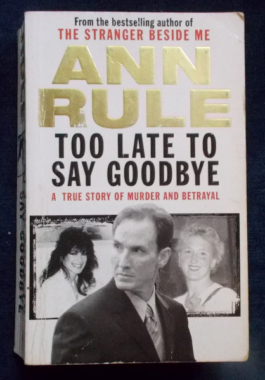 Beautiful Jenn Corbin appeared to have it all: two dear little boys, a posh home in one of the upscale suburbs of Atlanta, expensive cars, a plush houseboat and a husband - Dr. Bart Corbin, a successful dentist - who was tall, handsome, and brilliant. Then in December 2004, Jenn was found dead with a bullet in her head. Apparently a suicide. But Gwinnett County detective Marcus Head was not totally convinced, nor was Jenn's family, who could not believe she would take her own life. Only later would detectives learn that another beautiful woman in Dr. Corbin's past had been found dead in exactly the same way - and who had also been ruled a suicide...
Beautiful Jenn Corbin appeared to have it all: two dear little boys, a posh home in one of the upscale suburbs of Atlanta, expensive cars, a plush houseboat and a husband - Dr. Bart Corbin, a successful dentist - who was tall, handsome, and brilliant. Then in December 2004, Jenn was found dead with a bullet in her head. Apparently a suicide. But Gwinnett County detective Marcus Head was not totally convinced, nor was Jenn's family, who could not believe she would take her own life. Only later would detectives learn that another beautiful woman in Dr. Corbin's past had been found dead in exactly the same way - and who had also been ruled a suicide... -
 In the years between 1860 and 1880, dozens of bushrangers, some bold and famous, some little more than petty thieves, rampaged across the New South Wales and Victorian countryside - looting and murdering, bailing up travellers, harassing police, terrorising settlers. Perhaps the most famous of these in the 1860s was a handsome young man named Ben Hall, the first official outlaw under a new Act, shot dead by police in 1865. Other members of his gang, "Flash" Johnny Gilbert, Johnny Vane, O'Meally and Dunn, were all captured or shot by their pursuers. Also outlawed were Frederick Lowry, the ferocious Daniel Morgan, and Fred Ward, better known throughout New South Wales as "Thunderbolt". Finally, in this second volume of his History of Australian Bushranging, Charles White examines at length the incredible story of the Kelly Gang - Ned, Dan, Steve Hart and Joe Byrne.
In the years between 1860 and 1880, dozens of bushrangers, some bold and famous, some little more than petty thieves, rampaged across the New South Wales and Victorian countryside - looting and murdering, bailing up travellers, harassing police, terrorising settlers. Perhaps the most famous of these in the 1860s was a handsome young man named Ben Hall, the first official outlaw under a new Act, shot dead by police in 1865. Other members of his gang, "Flash" Johnny Gilbert, Johnny Vane, O'Meally and Dunn, were all captured or shot by their pursuers. Also outlawed were Frederick Lowry, the ferocious Daniel Morgan, and Fred Ward, better known throughout New South Wales as "Thunderbolt". Finally, in this second volume of his History of Australian Bushranging, Charles White examines at length the incredible story of the Kelly Gang - Ned, Dan, Steve Hart and Joe Byrne. -
 On April 4th, 1968, Dr. Martin Luther King, Jr. stepped out onto the balcony of the Lorraine Motel in Memphis, Tennessee, and into his killer's line of fire. One shot ended Dr. King's life and forever changed the course of American history - setting into motion a massive cover-up that has withstood a quarter-century of scrutiny. Now, after 18 years of intensive investigation, William F. Pepper tears away the veil of subterfuge that has hidden the truth of King's death - proving the innocence of convicted assassin James Earl Rayand revealing the cabal of government leaders and organised crime figures that masterminded the assassination of one of the most influential leaders of our age. The author was an associate of Dr. King and executive director of the independent political coalition that hoped to put King forward as a third party presidential candidate in 1968. After the murder, Pepper walked away from politics. But in 1977. Reverend Ralph Abernathy asked Pepper to interview James Earl Ray. Initially sceptical, Pepper became convinced that Ray was innocent of the crime and that Ray had always claimed, he had been manipulated by a man named Raul and was the victim of a set-up. But who was behind the set-up - and why?
On April 4th, 1968, Dr. Martin Luther King, Jr. stepped out onto the balcony of the Lorraine Motel in Memphis, Tennessee, and into his killer's line of fire. One shot ended Dr. King's life and forever changed the course of American history - setting into motion a massive cover-up that has withstood a quarter-century of scrutiny. Now, after 18 years of intensive investigation, William F. Pepper tears away the veil of subterfuge that has hidden the truth of King's death - proving the innocence of convicted assassin James Earl Rayand revealing the cabal of government leaders and organised crime figures that masterminded the assassination of one of the most influential leaders of our age. The author was an associate of Dr. King and executive director of the independent political coalition that hoped to put King forward as a third party presidential candidate in 1968. After the murder, Pepper walked away from politics. But in 1977. Reverend Ralph Abernathy asked Pepper to interview James Earl Ray. Initially sceptical, Pepper became convinced that Ray was innocent of the crime and that Ray had always claimed, he had been manipulated by a man named Raul and was the victim of a set-up. But who was behind the set-up - and why? -
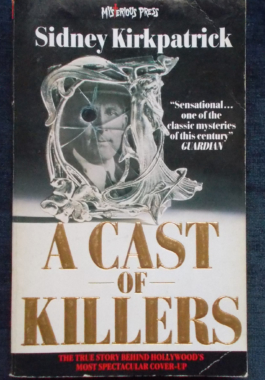 On February 1, 1922, the distinguished silent-film director William Desmond Taylor was shot dead in his Los Angeles bungalow. Reports of strange activities at the scene circulated soon after. When the police arrived, the head of Paramount Studios was burning a bundle of papers in the fireplace, and a well-known actress was searching the house for letters she claimed were hers. Despite a full-scale investigation - at one time there were over 300 suspects - the case was never solved; to this day it has remained a lingering Hollywood scandal. In 1967, more than forty years after Taylor's death, director King Vidor felt determined to solve the mystery which had haunted him throughout his career. He wanted to make a film about it. Through his intimate knowledge of both the studios and the stars, he succeeded - where dozens of professional detectives had failed - in discovering the identity of the murderer. But his findings were too explosive. He decided he could never go public and locked his evidence away. After Vidor's death in 1982, Sidney D. Kirkpatrick, Vidor's authorised biographer, gained access to the evidence and reconstructed the amazing story of Taylor's murder and Vidor's investigation. With a cast of suspects that includes the actress Mabel Normand, a reputed drug addict; the beautiful ingénue, Mary Miles Minter; Mary's domineering mother, Charlotte Shelby; Taylor's homosexual houseman; and Taylor's secretary, who bore an uncanny resemblance to Taylor's mysteriously elusive brother, this true crime story has all the elements of a classic murder mystery. Covered up for more than half a century, the full story can now be told in all its riveting, shocking detail. Contains black and white photographs.
On February 1, 1922, the distinguished silent-film director William Desmond Taylor was shot dead in his Los Angeles bungalow. Reports of strange activities at the scene circulated soon after. When the police arrived, the head of Paramount Studios was burning a bundle of papers in the fireplace, and a well-known actress was searching the house for letters she claimed were hers. Despite a full-scale investigation - at one time there were over 300 suspects - the case was never solved; to this day it has remained a lingering Hollywood scandal. In 1967, more than forty years after Taylor's death, director King Vidor felt determined to solve the mystery which had haunted him throughout his career. He wanted to make a film about it. Through his intimate knowledge of both the studios and the stars, he succeeded - where dozens of professional detectives had failed - in discovering the identity of the murderer. But his findings were too explosive. He decided he could never go public and locked his evidence away. After Vidor's death in 1982, Sidney D. Kirkpatrick, Vidor's authorised biographer, gained access to the evidence and reconstructed the amazing story of Taylor's murder and Vidor's investigation. With a cast of suspects that includes the actress Mabel Normand, a reputed drug addict; the beautiful ingénue, Mary Miles Minter; Mary's domineering mother, Charlotte Shelby; Taylor's homosexual houseman; and Taylor's secretary, who bore an uncanny resemblance to Taylor's mysteriously elusive brother, this true crime story has all the elements of a classic murder mystery. Covered up for more than half a century, the full story can now be told in all its riveting, shocking detail. Contains black and white photographs. -

Jimmy Governor: Frank Clune
$30.00Jimmy Governor was born a half-caste and grew up to be a gentle, hard-working man. On December 10 1898, he committed the unpardonable sin of marrying a white woman. He and his wife, downgraded to the status of outcasts, became the targets of taunts, insults and bigotry from a society determined to undermine their dignity. Two years later, Jimmy Governor became a murderer. -
 October, 2011: At first it looked like a swag, said the grader driver who found the body just off the road outside the outback town of Katherine. Police identify the dead man as Ray Nicefero, who'd recently appeared in court for aggravated assault and breaching a domestic violence order. Three days later, three young local suspects were arrested: Christopher Malyschko; Darren 'Spider' Halfpenny; and 19-year-old indigenous Zak Grieve. A month later, Bronwyn Buttery, Ray's former partner and Christopher's mother, is arrested. But when the accused face court in the rough justice system of the Northern Territory, it soon becomes apparent there are few certain, provable facts to be had. Depending on who was talking, a loving friend could be an abusive monster; a battered wife a conniving temptress. And a joke between mates about the best way to dispose of a body becomes a conspiracy to murder. The outcome of the case is no less murky, thanks to the NT's mandatory sentencing laws, which, the judge said, 'brings about injustice'. This is the story of murder in an outback town and the extraordinary aftermath; and it raises important questions such as how an indigenous man who was not present at a murder can be sentenced to jail for twenty years.
October, 2011: At first it looked like a swag, said the grader driver who found the body just off the road outside the outback town of Katherine. Police identify the dead man as Ray Nicefero, who'd recently appeared in court for aggravated assault and breaching a domestic violence order. Three days later, three young local suspects were arrested: Christopher Malyschko; Darren 'Spider' Halfpenny; and 19-year-old indigenous Zak Grieve. A month later, Bronwyn Buttery, Ray's former partner and Christopher's mother, is arrested. But when the accused face court in the rough justice system of the Northern Territory, it soon becomes apparent there are few certain, provable facts to be had. Depending on who was talking, a loving friend could be an abusive monster; a battered wife a conniving temptress. And a joke between mates about the best way to dispose of a body becomes a conspiracy to murder. The outcome of the case is no less murky, thanks to the NT's mandatory sentencing laws, which, the judge said, 'brings about injustice'. This is the story of murder in an outback town and the extraordinary aftermath; and it raises important questions such as how an indigenous man who was not present at a murder can be sentenced to jail for twenty years. -
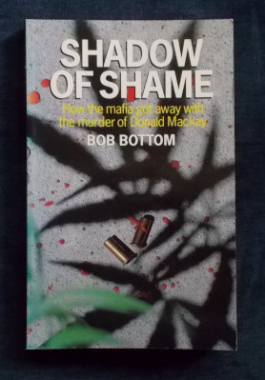
Shadow Of Shame: Bob Bottom
$12.00Donald Bruce MacKay, the Griffith anti-drugs campaigner, disappeared without trace from the carpark of the Griffith Hotel in July 1977. Mackay had been a secret informant for polce against illicit growing of marijuana growing in the Riverina area. His ‘disappearance’ became Australia’s first political assassination. This is the shocking story of how the mafia planned and executed his murder. Throughout the shameful decade that followed, some people, even at senior levels of politics and law enforcement, connived to cover up this mafia murder. Bob Bottom, a crime journalist, traces the birth and growth of the mafia in Griffith, known to police as a centre for serious crime as early as the 1930s. By the 1970s, when Mackay first became concerned about illicit drug activities in his town, those controlling organised crime had become far more sophisticated. Bribery, corruption and pay-offs had become commonplace. Serious questions about NSW police investigations into Australia’s most notorious murder precipitated a special commission of enquiry – nine years later...Bottom also details how drug boss Robert Trimbole lived safely in Spain despite international police knowledge of his whereabouts and of the failure of Australian authorities to bring him to justice. Illustrated with black and white photographs.






























